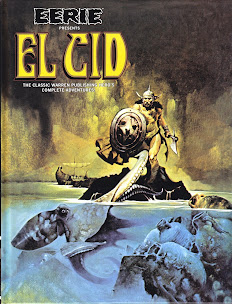Book Review: 'Landis: The Story of a Real Man on 42nd Street' by Preston Fassel
4 / 5 Stars'Landis: The Story of a Real Man on 42nd Street' (145 pp.) was published by Encyclopocalypse Publications in 2021. Author Preston Fassel is a writer of fiction and nonfiction works on horror, alternative cinema, and pop culture.
Bill Landis is one of the more interesting figures in the fringes of 1980s pop culture, as well as the Founding Father of the practice of appreciating 'trash cinema', that is, low-budget, transgressive movies.
Landis began it all in June 1980, with the first issue of a newsletter / magazine called Sleazoid Express, aimed at the patrons of the grindhouse theaters on 42nd Street, and the hipsters attending events at the 'Club 57' art cafe in the East Village.
Before there was Shock Cinema, Psychotronic Video or Deep Red, before there was Quentin Tarantino or Robert Rodriguez, and only a year or two after Josh Alan Friedman began chronicling Times Square, there was.…Sleazoid.
The wave of reviews and analyses of schlock and sleaze cinema that arrived in the 1980s, and coincided with the rise of VHS tapes, took inspiration from Landis and his newsletter.
 |
| Jimmy McDonough (left), unidentified patron (center), and Bill Landis (right) at a theater on 42nd Street, photo by Yara Cluver |
Sleazoid quickly became a must-read among hipsters and film fanatics. I remember finding out about it late in 1984, perhaps from some column or article in the magazine Film Comment. I placed my order early in 1985, and got a bunch of issues before Sleazoid ceased publication later that year.
 |
| Issue of Sleazoid Express, circa 1985 |
Landis's 1986 Voice piece, 'Using and Losing on Times Square', about down-and-out Times Square hustlers in the era of AIDS, was particularly memorable.
Later in the 1990s, Landis and his wife Michelle Clifford revived Sleazoid, and issued a new magazine called Metasex.
In 2002, Landis and Clifford published a book called 'Sleazoid Express: A Mind-Twisting Tour Through the Grindhouse Cinema of Times Square', which was a retrospective of Landis's days as a movie fan and critic, as well as a primer on sleaze cinema. Issues of Sleazoid continued to be published, before tailing off as the decade began to close.
In 2008, Landis died of a heart attack; he was only 49, estranged from friends and family, and living in drugged-out squalor in an apartment in Chicago.
 |
| Unidentified Sleazoid staffer (left) and 'Gummo', New York City, mid-1980s |
In 'Landis: The Story of a Real Man on 42nd Street', Fassel gives a very readable account of Landis's life and times. While Fassel is an unashamed Landis fanboy the book is not a hagiography, recounting Landis's faults (he frequently was not a very nice person to be around) with candor.
Fassel also doesn't shy from relating his subject's descent into self-abuse and self-degradation in the mid-80s, when Landis became a live sex-show performer and porn actor under the stage name 'Bobby Spector'.
And Fassel acknowledges that Landis was a bullshitter, and much of Landis's autobiographical writings must be taken with a degree of skepticism.
One area where 'The Story of a Real Man' falls a bit short is in the lack of graphics; save for a black-and-white photo of Landis, there's no other illustrative material in the book. Some scans of Sleazoid, stills from some of Landis's X-rated films, and portraits of Landis taken over the years, all would have helped round out the book. Fassel has indicated that the rights to reproduce Sleazoid are stalemated by a uncommunicative Michelle Clifford, but still, some visual content would have helped lend more perspective to the Landis phenomenon.
Who will want a copy of 'Landis: The Story of a Real Man on 42nd Street' ? Aside from the obvious answer of Landis fans and trash cinema fans, I believe anyone interested in New York City's seedier side, as it was in the halcyon days of the 1960s through the 1980s, will find the book engaging.
































































.jpg)


















